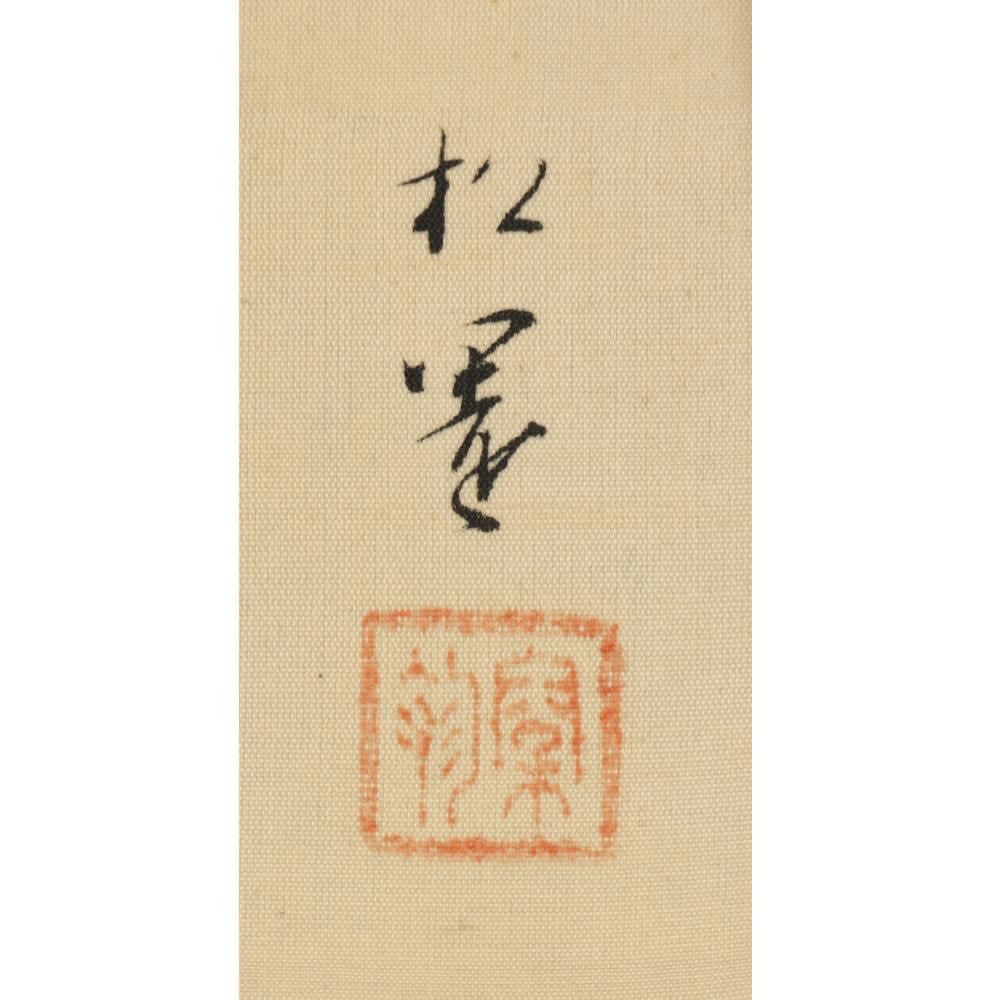Uemura Shōen (1875–1949)
Mushiboshi (airing of kimono)
Color and gold on silk, hanging scroll
With a Tokyo Art Club certificate, a box signed by the artist, double boxed
Seal: Sho (shin)
123 x 51 cm
222 x 65 cm (overall)
Further images
Fine touches from the mould are left on its surface, giving the inorganic metallic texture a sense of humane animation. Her posture of touching hair with two hands is found in Tsuji Shindo’s 1940 wood carving Girl. Perhaps for Shindo, this is a pose that reflects the inner world of his model.
This work comes with a letter—probably addressed to the figure who commissioned the present work—by the artist. It is dated on March 17, and its stamp suggests that it was the year of 1941 when Shindo was thirty-three. Five years before, in 1936, he got married and moved to Ikebukoro, Tokyo. Three years before, in 1938, he was given the Buddhist name “Shindo” after many years of admiration of Zen since adolescence. In 1941, his wood carving work Country Man was awarded the second at Inten, which demonstrates his mastery of representing human body and facial expressions, shared by the present work.
Until around 1950, Shindo developed his style further to deformed, geometric forms, which gave birth to the novel ceramic art form, tocho, that have influenced Japanese avant-garde ceramics, including Sodeisha, greatly. The present work reveals Shindo’s comprehensive knowledge and skill of realism behind his cutting-edge expression.
Uemura Shoen (nihonga painter; 1875-1949)
Kyoto-born nihonga painter. Her real name is Tsune. Mother of Uemura Shoko and grandmother of Uemura Atsushi. Graduated from the Kyoto Prefecture Painting School. Studied under Suzuki Shonen, Kono Bairei, and Takeuchi Seiho. Active in the Ministry of Education Art Exhibition (Bunten), and produced a lot of paintings of beauty in modern nihonga style. Became the first female receiver of the Order of Culture.
This work comes with a letter—probably addressed to the figure who commissioned the present work—by the artist. It is dated on March 17, and its stamp suggests that it was the year of 1941 when Shindo was thirty-three. Five years before, in 1936, he got married and moved to Ikebukoro, Tokyo. Three years before, in 1938, he was given the Buddhist name “Shindo” after many years of admiration of Zen since adolescence. In 1941, his wood carving work Country Man was awarded the second at Inten, which demonstrates his mastery of representing human body and facial expressions, shared by the present work.
Until around 1950, Shindo developed his style further to deformed, geometric forms, which gave birth to the novel ceramic art form, tocho, that have influenced Japanese avant-garde ceramics, including Sodeisha, greatly. The present work reveals Shindo’s comprehensive knowledge and skill of realism behind his cutting-edge expression.
Uemura Shoen (nihonga painter; 1875-1949)
Kyoto-born nihonga painter. Her real name is Tsune. Mother of Uemura Shoko and grandmother of Uemura Atsushi. Graduated from the Kyoto Prefecture Painting School. Studied under Suzuki Shonen, Kono Bairei, and Takeuchi Seiho. Active in the Ministry of Education Art Exhibition (Bunten), and produced a lot of paintings of beauty in modern nihonga style. Became the first female receiver of the Order of Culture.









